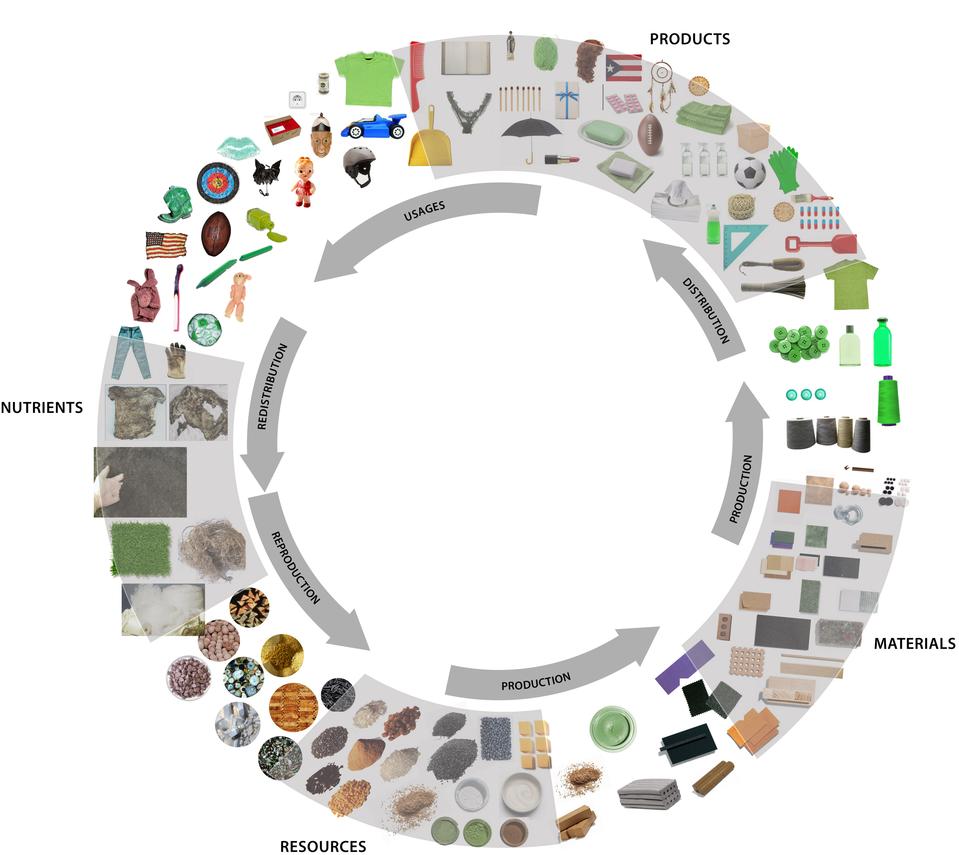Cradle to Cradle or C2C is a principle of design that improves products and services most sustainable, by which the production and use makes our environment better instead of loading and taxing it.
By keeping from the design in mind the spent or disused goods, every product becomes the raw material for something new. 'Waste' is no longer produced, everything remains useful (re) usable raw material or food. Why else would you spend energy, time, resources and money to it?
 In the book Cradle to Cradle: Remaking the Way We Make Things (2002) by William McDonough and Michael Braungart is this idea developed. They see the world rightly as a closed circuit in which everything has a second life and an endless cycle.
In the book Cradle to Cradle: Remaking the Way We Make Things (2002) by William McDonough and Michael Braungart is this idea developed. They see the world rightly as a closed circuit in which everything has a second life and an endless cycle.
Sustainable development was defined in 1987 by the Brundtland Commission (Brundtland Report) as “development by which the present generation provides its needs without compromising the ability to limit the purpose for the next generation.'
The aim of the cradle to cradle continues and goes on, by providing future generations even of more opportunities. Instead of being (producing) less bad, we must be good.
Current methods of sustainable product development, such as a life cycle analysis (LCA), try to limit the damage of production by intervening in the chain from extraction of raw materials, production, energy and chemical consumption (e.g. washing powder, fuel), reuse and deposit. The improvement chooses cleaner raw materials, efficient use and recycling. LCA takes into account the total environmental impact of a product throughout the entire life cycle of raw materials for transport to disposal.
For each stage, an inventory of energy and material consumption and emissions is made. This is design from cradle to grave.
Recycling is often downcycling: reuse as inferior commodity. C2C aims upcycling.
Things should at least get their original value again.
The Cradle to Cradle philosophy wants all the materials used does not waste but remain raw, lossless or (to deposit) residues.
Main design criteria:
1) product materials are completely safe for the environment, humans, plants and animals;
2) product materials will with quality preservation be reused later in the biosphere (nature) or the technosphere (society);
3) the product can be easily and quickly dismantled so all materials as scheduled can begin a next life.
The design would even aim at environmentally positive products and processes, should seek a positive footprint to leave behind. For example, make no cars that create air pollution, but air purification. Or water treatment designs that yields energy instead of consume.
The example of McDonough and Braungart is that (even) in weight weighed there are more ants on earth than people. But ants do not weigh on this planet, on the contrary, they have a net positive contribution.
Such an approach requires a whole new collaboration between suppliers, producers, users and processors in which the closing of material cycles is central.
For industrial products is often just purchase settled. And not the use and disposal. If we also charge this ‘Total Cost of Ownership“ is C2C certainly competitive.
Sometimes we seem with reuse ideas to be on the right track. But often we do not think far enough.
Paper is bleached with chlorine, and ink is stained with heavy metals. Recycled, this supplies greyish newsprint. Of these particles chlorine and heavy metals wear in the air. The paper is too dirty and too toxic for further reuse as paper. It is better for the environment to deposit and fell a new tree (?)
A reflector pole made along the way of old plastic bottles and car tires. Recycled. However, sulfur and other harmful substances from the low-grade material that degrades quickly under UV light seep into the soil. And after some time, the pole disposed of. Result: the spread of toxins and making high quality material unusable. High quality stakes, renewable resources exist. They do not leak poison but feed the soil. After use, it can be decomposed along the shoulder as food. This pole is made of wood.
Some good attempts
The original English book Cradle to Cradle is made of recyclable plastic. In hot water the ink dissolves, so that the plastic after a simple process is glossy, bright white again. Also, the ink can be re- used.
River Rouge auto plant from Ford had to be abandoned because the ground was too heavily polluted. Braungart and McDonough have created a new factory that purifies land and river, creates habitat for birds and still makes cars.
Ford Model U: all materials are biodegradable or recyclable in technical products without loss of quality. The tires attract harmful particles on the road, and give by wearing off food for the shoulder. The exhaust is clean water. This car is not (yet) in production.
Slow development, but with potential: decentralized generation and distribution of energy (heat, electricity, biogas), local markets and micro-, smart- and other grids.
The concept of circular economy starts from the same principles.
